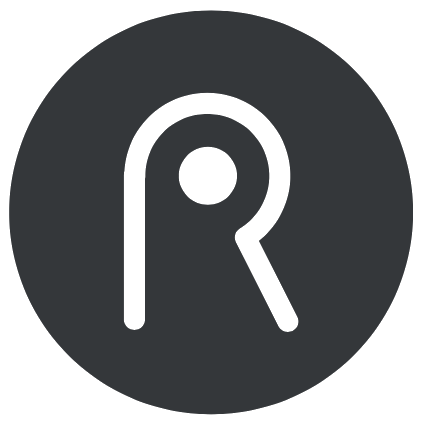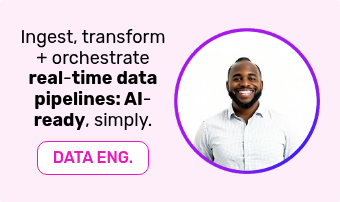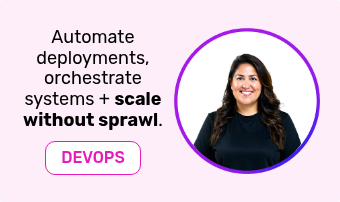The integration of data, artificial intelligence (AI), and IoT technologies to create a single IoT platform for data collation, visualization and application creation has not only transformed how we monitor assets in real-time, but improved all-round asset and business performance.
What is an integrated Data, AI, and IoT platform technology?
In short, it's a single platform that's capable of delivering all the functionality needed to deliver on real-time asset monitoring and an almost infinite number of other business use cases, (see examples), with three distinct technology sets combined within it, namely:
- Data refers to the process of combining data from various sources, such as sensors, databases, and applications, standardising it, and then collating to create a real-time single source of truth for analysis and visualizations (data pipelines and ETL).
- AI, or 'Artificial Intelligence', refers to the use of algorithms and machine learning to analyse and make decisions based on the data.
- IoT, or the 'Internet of Things', refers to the network of physical devices, vehicles, and other objects that are embedded with sensors, software, and other technologies to connect and exchange data with other devices and systems. In this context , it refers to the collection of data from the field in real-time, as well as the applications that are then built on the platform that users interact with (an IoT solution).
The platform performs three key functions for businesses:
- It enables you to create a real-time, accurate single source of truth for all your relevant operational data;
- Gives you all-new ways to analyse and then visualise it; and
- Provides you with a set of easy-to-use tools to build use case-specific applications that businesses can use to improve performance via human real-time decision-making or AI-led intervention through automations and custom business logic.
All three of these disciplines are needed to deliver on real-time asset monitoring and optimisation and come together in next generation platforms, such as Rayven's complete, full-stack platform, to offer end-to-end capabilities in a single piece of software.
How do these technologies work together to establish real-time asset monitoring?
Firstly, it's critical to establish reliable, secure data feeds into your integrated data, AI + IoT platforms. This will involve integrating machinery software and systems directly with the platform, as well as installing sensors on the assets that need to be monitored where there are missing data points (as well as installing connectivity in order to get it to the platform in real-time, which could take the form of simple WiFi and mobile phone networks).
The data that needs to be collected to establish assets' performance are things such as temperature, speed, vibration, and other parameters that are directly related to the assets health, as well as additional data points (such as maintenance schedules, operator information, and other information about assets' use) needed in order to give an overall picture of not just real-time performance, but associated parameters that may be influencing outcomes.
With data being accurately and reliably delivered to the platform in real-time, you can then use its capabilities to create visualizations, reports and dashboards that provide a unified view of all the asset data for employees to use, plus leverage machine learning capabilities to dive deeper into the data; identifying patterns, spotting anomalies, and predicting future performance.
What are the Benefits of Real-Time Asset Monitoring?
- Optimise operations by identifying inefficiencies and areas for improvement. For example, if a machine is running too hot, real-time asset monitoring can alert the maintenance team to perform preventive maintenance before a breakdown occurs. This reduces downtime, improves efficiency, and saves money in the long run.
- Improve safety by alerting operators to potential hazards. For example, if a vehicle is driving too fast or erratically, real-time asset monitoring can alert the driver to slow down or take corrective action. This reduces the risk of accidents and injuries.
- Improve customer service by ensuring that assets are operating at peak performance. For example, if a delivery truck is delayed due to a breakdown, real-time asset monitoring can alert the customer to the delay and provide an estimated time of arrival. This improves customer satisfaction and reduces the risk of lost business.
- Help businesses comply with regulations and standards. For example, in the food and beverage industry, real-time asset monitoring can ensure that products are stored and transported at the correct temperatures to comply with food safety regulations.
- Reduce maintenance costs by predicting and preventing equipment failures. Real-time asset monitoring can identify when equipment is likely to fail, allowing maintenance teams to fix the issue before a breakdown occurs. This reduces the need for emergency repairs, which are typically more expensive than preventive maintenance.
- Increase asset lifespan by identifying and correcting issues early. Real-time asset monitoring can help identify and correct issues before they cause significant damage to the asset. This increases the lifespan of the asset and reduces the need for replacement.
- Gain a competitive edge by improving efficiency, reducing downtime, and improving customer satisfaction. Real-time asset monitoring can provide businesses with a competitive edge by improving efficiency, reducing downtime, and improving customer satisfaction. This can lead to increased sales, reduced costs, and improved profitability.
In addition to the benefits listed above, real-time asset monitoring can also provide businesses with valuable insights into their operations. By analysing the data collected from sensors, businesses can identify trends and patterns that can help them improve their operations further. For example, if a machine is running at a higher temperature than usual, real-time asset monitoring can alert the maintenance team to perform preventive maintenance. Still, it can also provide insights into why the machine is running hot in the first place, such as a faulty part or a change in the manufacturing process.
Real-time asset monitoring is not just for large enterprises. Small and medium-sized businesses can also benefit from real-time asset monitoring by reducing costs, improving efficiency, and improving customer satisfaction. For example, a small delivery company can use real-time asset monitoring to track their delivery trucks' location and provide customers with real-time updates on their delivery status.
To discover more about how our integrated data, iPaaS, Workflow Automation, AI + IoT platform can achieve this for you or to explore our ready-to-use real-time asset monitoring solutions, speak to us today
Author





















































